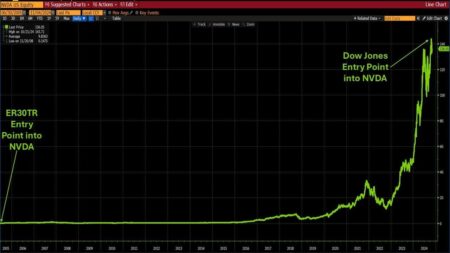Friday’s strong stock market close was a sign that it survived the PCE report but there were other meaningful market developments last week. Yields had been moving higher since the January FOMC meeting as 2-year Yields rose from a low of 4.141% to close Friday, February 23rd at 4.688%.
These short-term yields had made it back to the highs seen in late December as did the 10-Year T-Note yield as they had moved from a low of 3.817% on February 1st to 4.161%. The expectations for multiple rate cuts had changed after Fed Chair Jerome Powell said that a March cut is “probably not the most likely case.”
Going into the week of the PCE report some were looking for a hotter-than-expected PCE report to push yields even higher. This was expected to put additional pressure on stocks especially the large-cap growth stocks as well as the small-caps which are sensitive to yield changes.
That was a reasonable scenario based on fundamentals but the charts were telling a different story. As the 30-Year T-bonds made a higher high in yields on February 22nd the MACD-His formed a lower high, line c, and it turned negative last week as did the MACDs. The Friday close was the lowest in sixteen days and was well below the 20-day EMA which has flattened out.
The October 2022 top in yields was also identified by the MACD analysis (see highlighted sections) as both the MACD-His and MACDs diverged at the highs and then turned negative.
The sharp decline in yields to the December lows set the stage for a rebound or a pause in the decline. These are called continuation patterns and often form flags like the T-Bond yield, lines a and b. The pattern can also be used to determine a downside yield target. Using the width of the formation, a drop below line b will project a downside yield target of 3.754%.
The daily chart of the 10-year T-Note yield shows a similar formation as the yield reached the resistance at 4.161%. The rally failed just below the 50% retracement resistance at 4.387% before dropping sharply last Friday. There is next support in the 4.060-4.100% area and then the lows in the 3.800% area.
It will likely take another week or so to confirm a new downtrend in yields and before the close on Monday, the 2, 10, and 30-year yields are a bit higher on the day. For the 10-year yield a drop to the daily starc- band should set the stage for a rebound before a further decline.
There was also a dramatic move in the gold market as the SPDR Gold Trust (GDL) was up 2.3% and the Comex gold futures had their highest-ever weekly close. The first daily sign of a change was the positive daily DTS signal on Friday, February 23rd. The adaptive DTS analysis was developed by my colleague Jerry A and is the basis also for our T&J AI Watchlists.
The adaptive DTS analysis tracks signals for ETFs, stocks, and commodities using time frames ranging from hourly to monthly. This approach is designed to catch early signs of a trend change either up or down.
The 2/23 positive DTS was accompanied by good volume but then gold prices stayed in a narrow range until late last week when they accelerated to the upside, closing above the daily starc+ bands. The strong volume is also noted by the move sharply higher in the VolConfirm which combines the OBV analysis with other volume tools.
By last Friday’s close, the weekly DTS analysis on the Comex gold futures also turned positive. The gold futures had been testing the rising 20-week EMA currently at $2038 ( in blue) for the prior six weeks. The VolConfirm staged a major weekly breakout in November as the resistance at line a, was overcome.
As part of his creation of the adaptive DTS analysis, Jerry A also included the generation of price targets from the signals. Last week’s signal created three upside targets, $2175, $2236, and $2357. The fact that the gold futures, as well as GLD
GLD
The analysis of the bond market suggests that yields are likely to be lower, not higher in the months ahead. If this is correct then the current 10-Year T-Note yield of 4.219% may look quite attractive by the summer. My weekend analysis of the stock market can be found here on Forbes.com.
Read the full article here
















